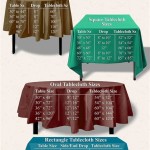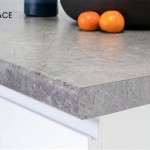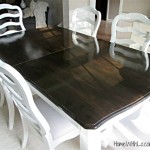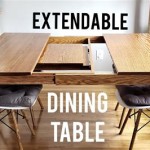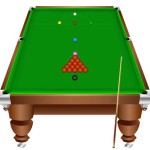How Wide Should An 8 Foot Table Be?
The question of ideal table width, particularly for an eight-foot table, is a common consideration for homeowners, interior designers, and event planners. While an eight-foot length provides ample surface area, the width significantly impacts the table's functionality, aesthetics, and the overall dining or workspace experience. There is no single "correct" answer, as the optimal width largely depends on the table's intended use, the size of the room it occupies, and the desired seating arrangement. Understanding the factors that influence width determination is essential for selecting the right table for any given context.
The standard width for an eight-foot table often falls within a range of 36 to 48 inches. This range represents a balance between providing sufficient space for place settings, centerpieces, and serving dishes, while also ensuring that individuals seated across from each other can easily converse. However, variations outside this range are perfectly acceptable and often desirable, depending on specific needs and preferences. A narrower table, for example, might be suitable for smaller dining rooms or areas where space is at a premium. Conversely, a wider table can accommodate larger gatherings and more elaborate table settings.
The design of the table itself can also influence the perceived sense of space. A table with a thinner profile and minimalist legs may appear less bulky than a table with a thick top and ornate supports. Similarly, the finish and color of the table can affect how it integrates into the surrounding environment. A light-colored table will generally feel more open and airy than a dark-colored table, especially in a smaller room. Therefore, it is important to consider the overall design aesthetic when determining the ideal width for an eight-foot table.
Considering Table Functionality
The primary function of the table is perhaps the most crucial factor in determining its ideal width. A dining table, for example, requires sufficient width to comfortably accommodate place settings, serving dishes, and beverages. A general rule of thumb is to allocate at least 24 inches of width per person to ensure comfortable dining. For an eight-foot table, which typically seats eight to ten people, this would translate to a minimum width of 36 inches. However, if the table is frequently used for formal dinners with multiple courses and elaborate centerpieces, a wider table, such as 42 or 48 inches, may be more appropriate.
In contrast, a conference table in an office setting may require a different width. While legroom and comfortable seating are still important, the primary focus is often on facilitating collaboration and the sharing of documents and materials. A narrower table may suffice if the primary function is simply to provide a surface for laptops and notepads. However, if the table is used for presentations or video conferencing, a wider table may be necessary to accommodate monitors, microphones, and other equipment. The specific needs of the users and the intended activities will ultimately dictate the optimal width.
Furthermore, consider the intended use of the table beyond dining or work. Will it be used for board games, puzzles, or arts and crafts projects? These activities often require more surface area than regular dining or work, and a wider table may be beneficial. Think about the types of items that will be placed on the table and the amount of space they will require. This will help in making an informed decision about the appropriate width.
Room Size and Proportion
The size and shape of the room in which the table will be placed is another critical consideration. A large table in a small room can feel cramped and overwhelming, while a small table in a large room can feel lost and insignificant. The goal is to achieve a sense of proportion and balance between the table and the surrounding space.
Before selecting a table, measure the dimensions of the room and map out the available space. Consider the placement of other furniture, such as chairs, sideboards, and cabinets. Ensure that there is ample space for people to move around the table comfortably, even when it is fully occupied. A general guideline is to allow at least 36 inches of clearance between the table and the walls or other furniture. This will prevent the room from feeling crowded and allow for easy access to seating.
If the room is narrow, a narrower table may be preferable, even if it means sacrificing some surface area. A rectangular table will typically work better in a narrow room than a square or round table. Conversely, if the room is wide, a wider table can help to fill the space and create a more balanced composition. The shape of the room should guide the selection of both the length and the width of the table.
Consider also the height of the ceiling. In a room with low ceilings, a large, wide table can feel particularly overwhelming. A table with a lower profile may be a better choice in this situation. Conversely, in a room with high ceilings, a larger table can help to ground the space and create a sense of intimacy.
Seating Arrangements and Aesthetics
The desired seating arrangement around the table also plays a significant role in determining the appropriate width. If the intention is to have seating only on the sides of the table, a narrower width may suffice. However, if seating is desired at both ends of the table, a wider width may be necessary to ensure adequate legroom for those seated at the ends.
Consider the type of chairs that will be used with the table. Chairs with arms will require more space than chairs without arms. Also, consider the style of the chairs and how they will complement the table. A modern, minimalist table may be best paired with sleek, contemporary chairs, while a traditional table may be better suited for more ornate chairs.
The overall aesthetic of the room should also influence the choice of table width. A formal dining room may benefit from a wider table with a more substantial presence, while a casual dining area may be better suited for a narrower, more understated table. The table should be a cohesive element within the room's design, and its width should contribute to the overall visual harmony.
Ultimately, the decision of how wide an eight-foot table should be is a matter of balancing functionality, space constraints, and aesthetic preferences. By carefully considering the intended use of the table, the size of the room, and the desired seating arrangement, it is possible to select a table that is both practical and visually appealing. Remember to prioritize comfort and usability, ensuring that the table provides ample space for all activities and allows for easy interaction between those seated around it.
Don't be afraid to experiment with different widths and layouts. Use masking tape to mark out the dimensions of the table on the floor to get a better sense of how it will fit in the room. Try different seating arrangements and imagine how people will interact around the table. This will help in making a more informed decision and ensuring that the chosen table meets all needs and expectations.
The perfect table width is not a fixed number but rather a tailored solution that reflects the unique characteristics of the space and the individuals who will use it. By carefully considering all relevant factors, it is possible to find an eight-foot table that is both functional and beautiful, enhancing the dining or workspace experience for years to come.

Creative 8 Person Dining Table Size For Your Eoyment Sizes Outdoor Diy

8 Ft X 36 Banquet Table The Party Als Resource Company

Urby 90 X 132 Inch Polyester Rectangular Table Cloth For 8 Foot Hipop Fashion

Gray Rectangular Tablecloth 60 X 126 Inch For 8 Foot Table

How To Calculate Rectangular Table Seating Capacity Diy Dining Design Sizes

Pool Table Size Chart Moving The Experts

Boardroom Tables 8 Ft Long By 4 Wide Skywave Ping

Let S Talk Linens The Ultimate Guide To Table Linen Sizes Party Al Ltd Pink Hippo Blog
What Is The Standard Size Of An 8 Seater Dining Table Quora

36 Inch Extra Wide 8 Foot Long Folding Plywood Table


